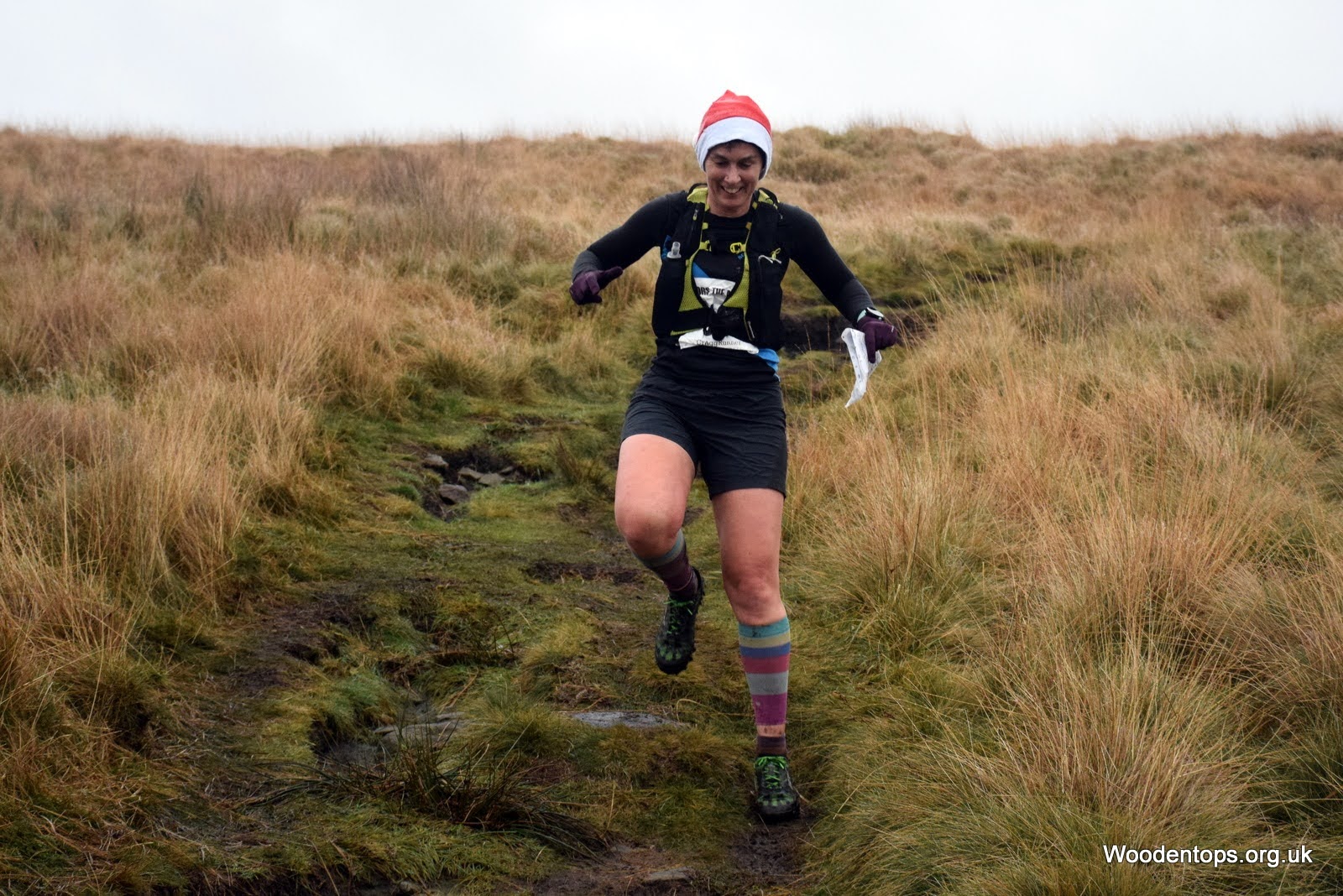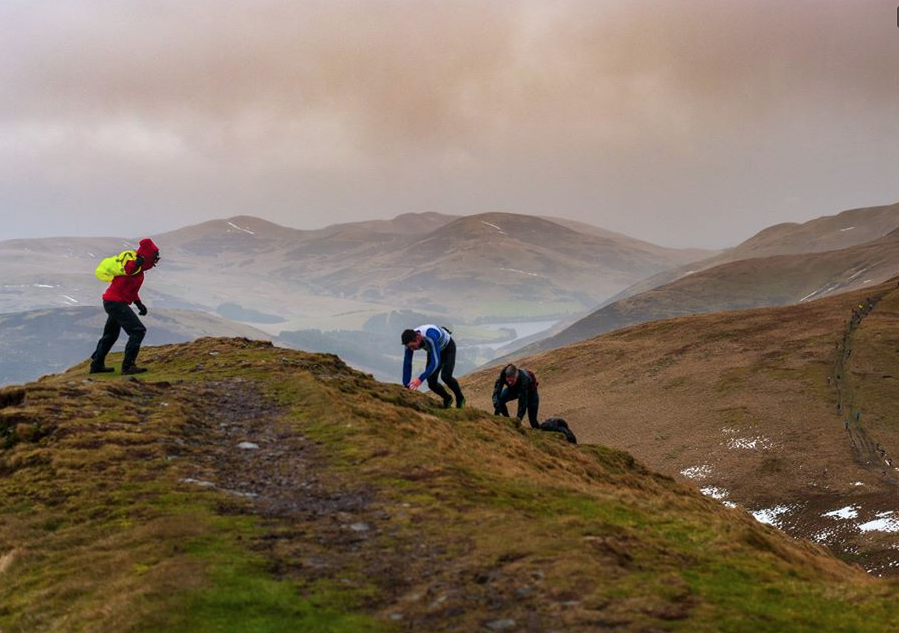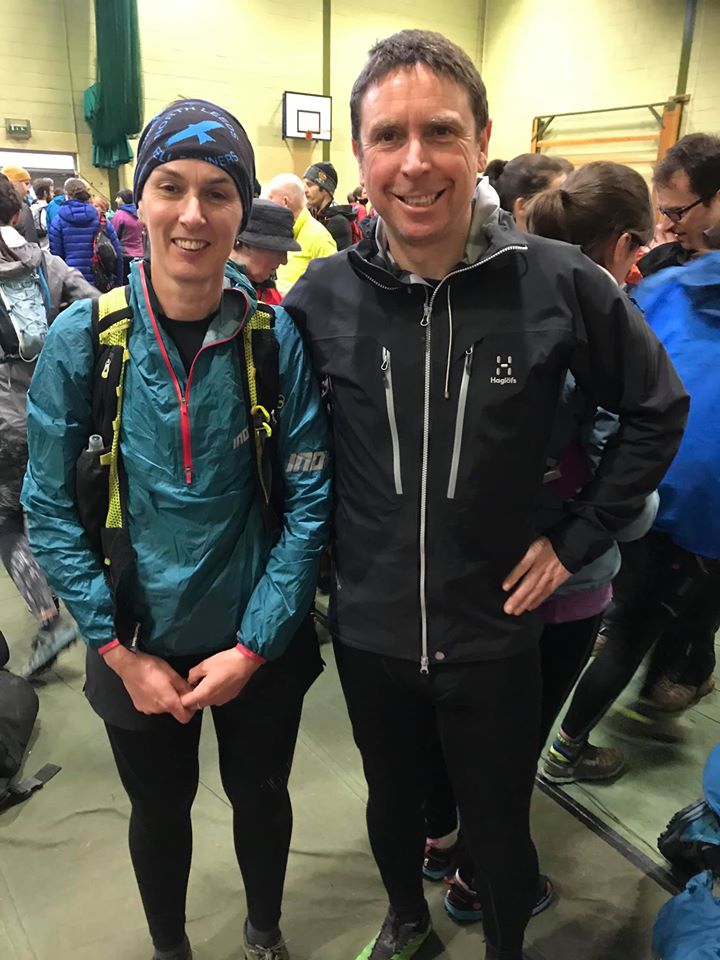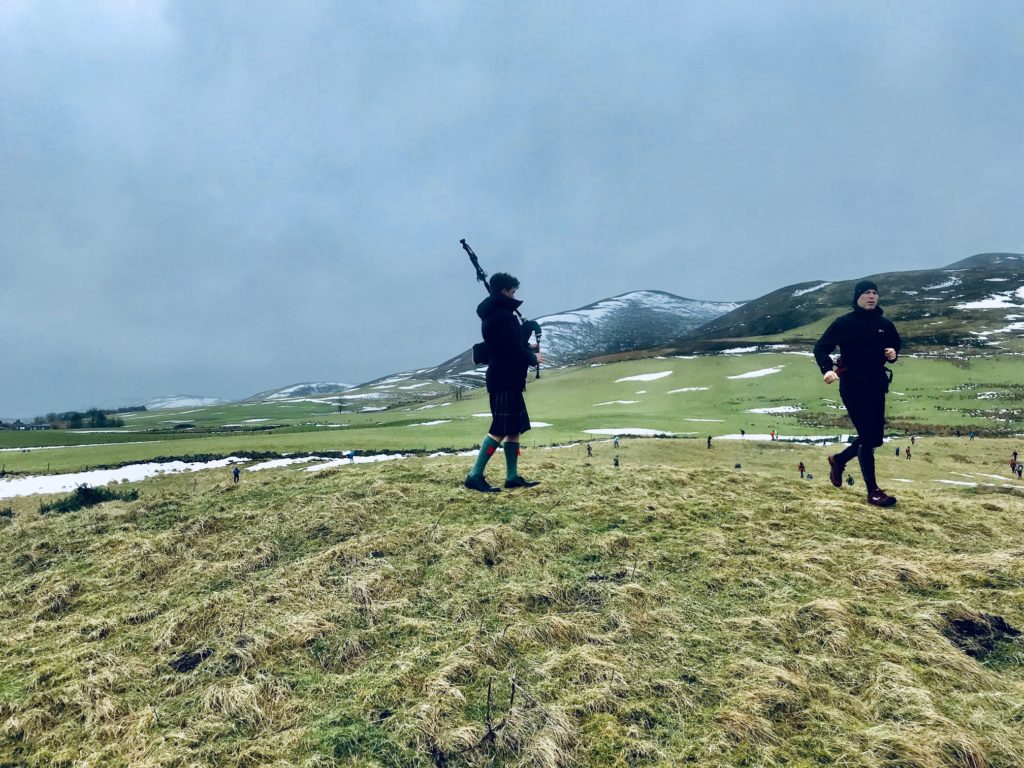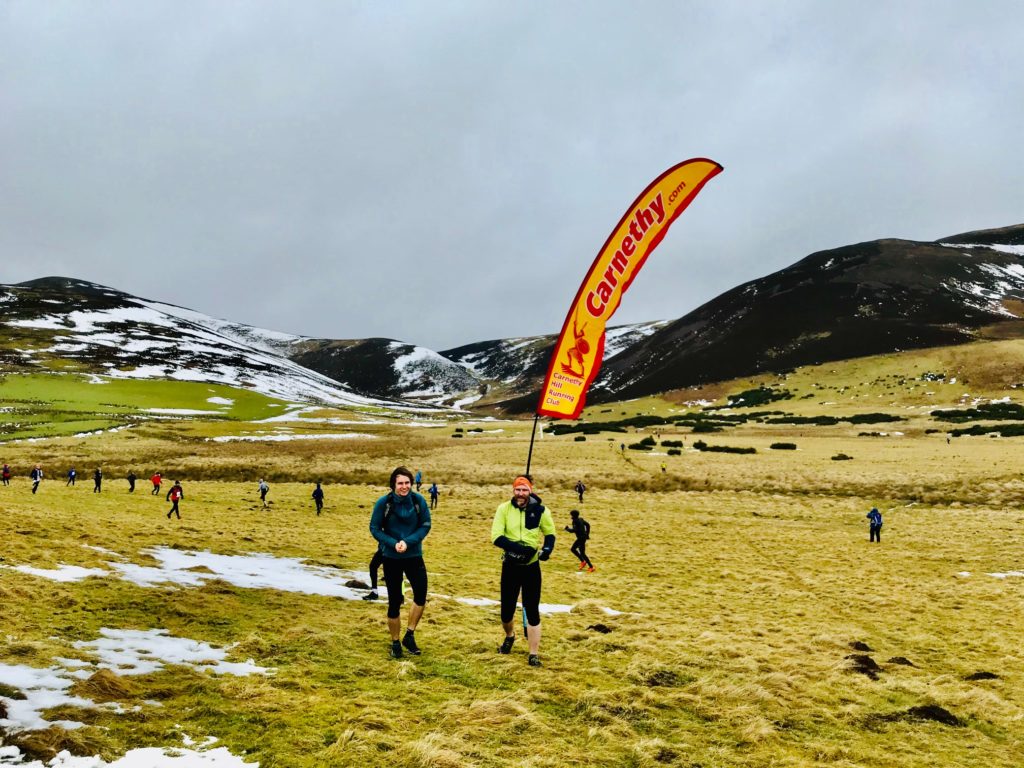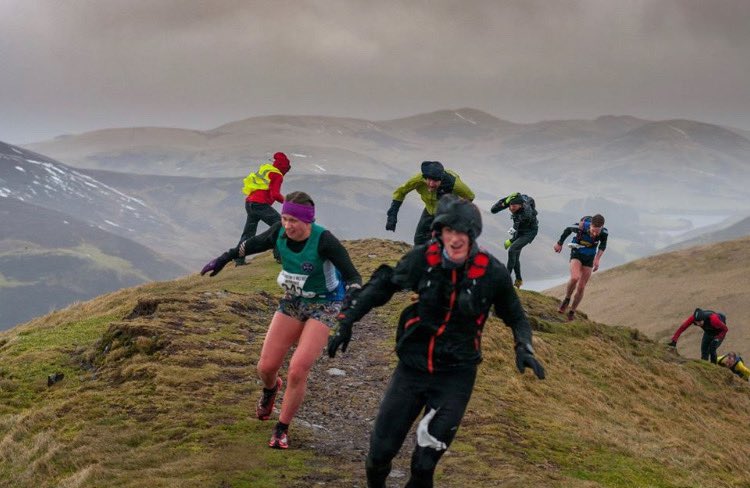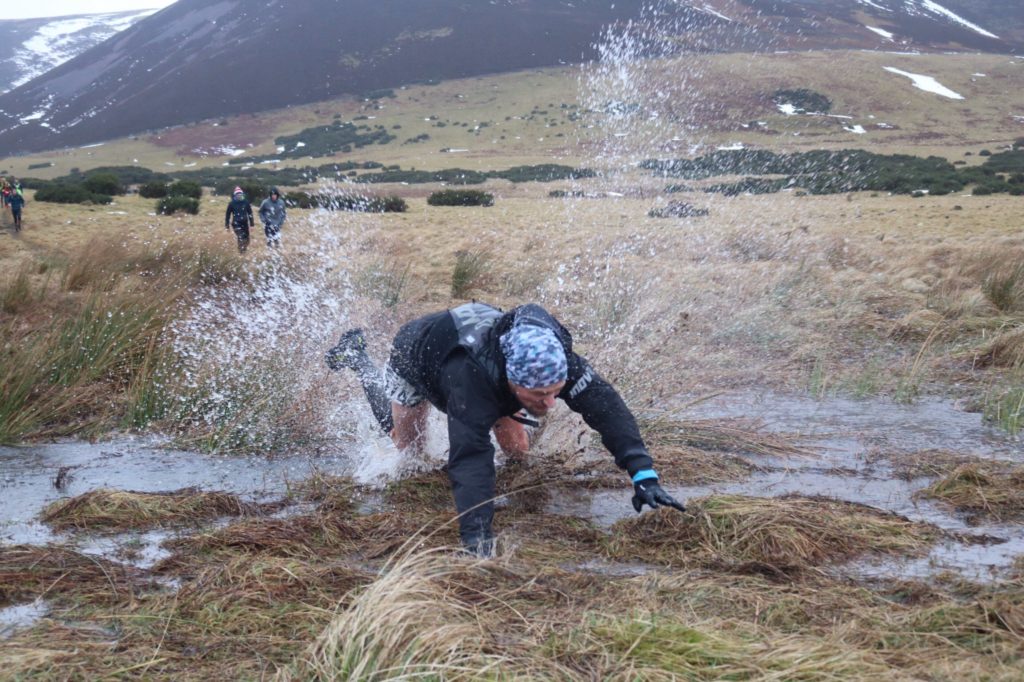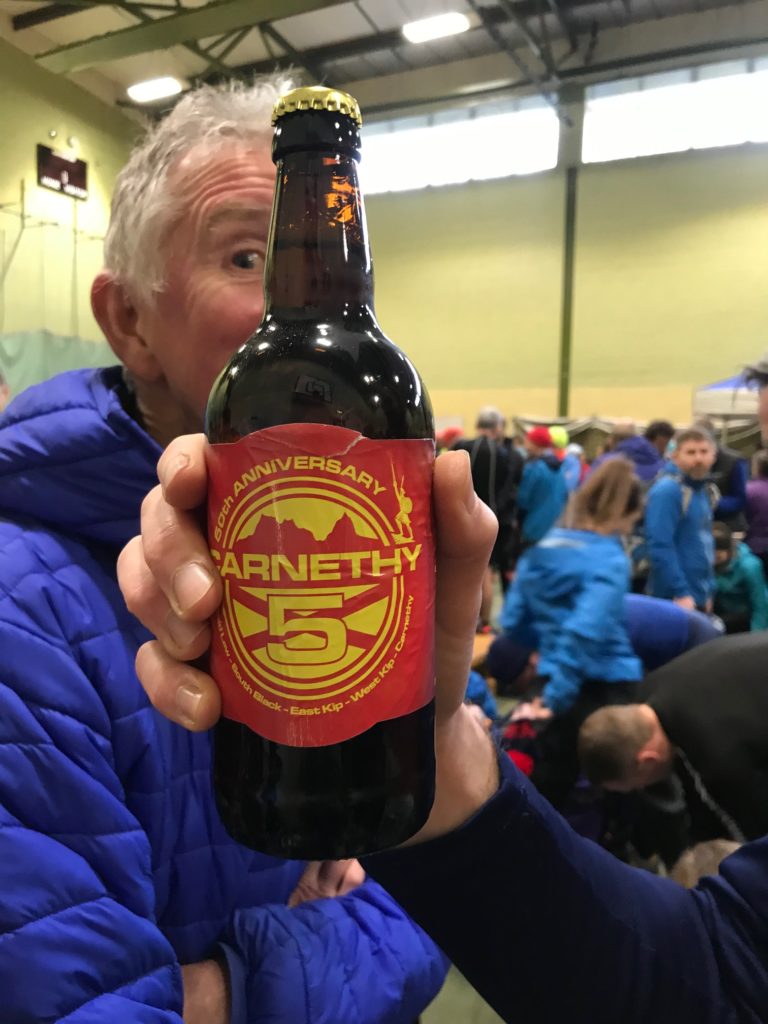You’ll be sick of me writing about this race by now. I’ve done it five times, by my count (which is probably off), and I will be doing it again, because it is so astonishingly beautiful. And because the race route serves my skills perfectly: five miles to the top of the Nick, then four miles mostly downhill. So as long as I do OK getting up, I will usually win places going down and as I only ever then lose places if a downhill is followed by a climb, I should be able to keep them. Not that that mattered, particularly, except that a few of my clubmates were also running, and some of us are very well matched for ability and pace, and we have a friendly rivalry. And I am lying about it not mattering: I wanted to beat them.
And I’m writing about it again because my report on the Carnethy 5 is the first running blog post I did since last May, and these days I take any willingness or desire in my brain to write as a gift, and I grab it.
The weather forecast was poor, again. As if last week’s winds were not enough, this week’s were no better. Different forecasts showed different numbers: Mountain Weather Forecast showed 80kph, the BBC showed 45mph, but down in Dufton village. Variously, showers or sleet showers were also predicted. In winds, the A66 can sometimes be closed, so we set off in good time, having checked beforehand (it was closed but only to high-sided vehicles). FRB told me that the A65 was closed though, and that could affect my clubmates. FRB was coming with me even though he hadn’t entered the race. He decided he would go for a run and then aim to be at the top of the Nick to meet runners, depending on the state of his cold (virus) and the cold (blowing a hoolie and temperature).
The parking was in a farmer’s field a ten minute walk from the village hall, previously race HQ but now Cake HQ as the registration was supposed to be in a marquee, but had been shifted to a small barn because the marquee blew away. We got there early but already the state of the field meant spinning wheels, and many people rushing to help spinning cars with a push up to the parking place. It was a cheering sight of the kindness of humans. But the field situation could only get worse the more cars arrived. I left FRB to get ready for his run and walked the long walk to get my number. By the time I got back the rain had set in. The driving, cold, miserable kind of rain.
So I wasn’t surprised to find FRB sitting in the car all kitted to run but looking at this view.
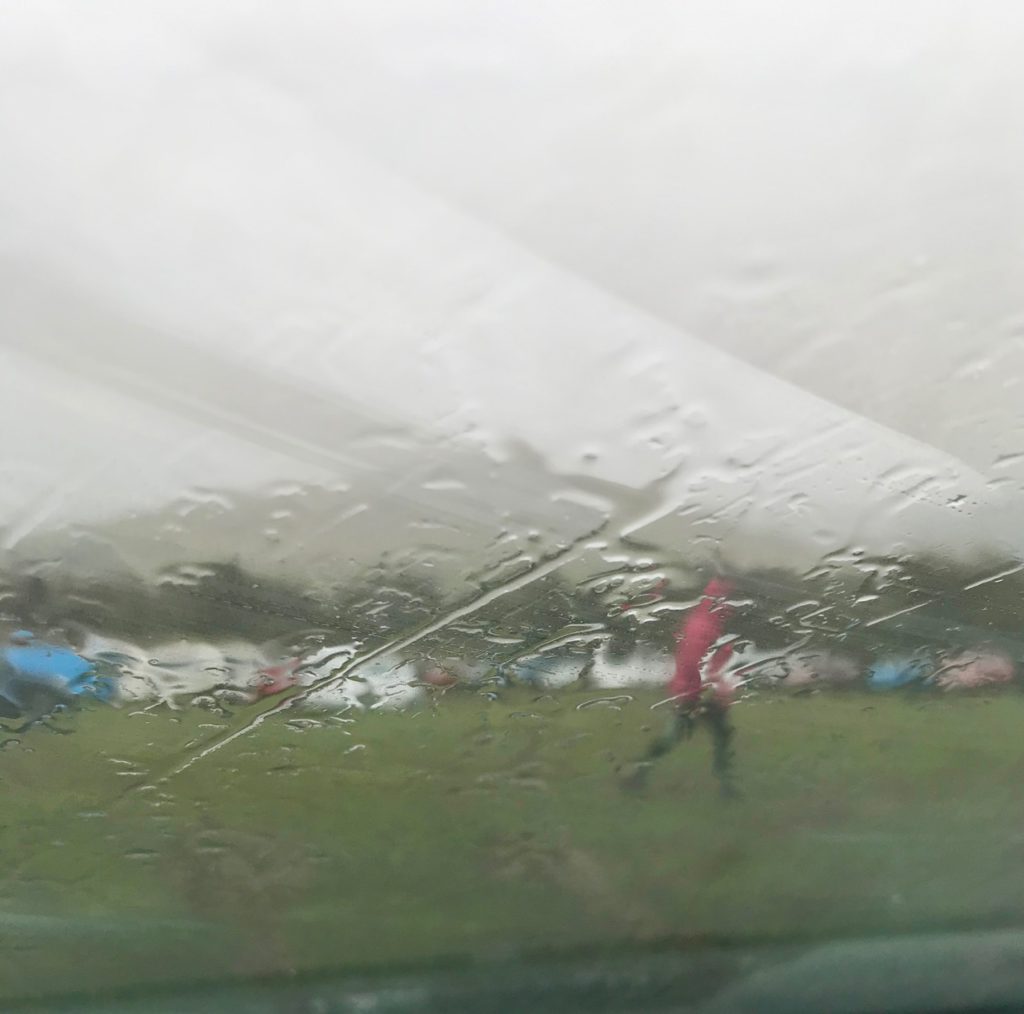
He is no fairweather runner, but it just looked too grim to open the car door. He set off eventually when it lessened, aiming to go up Dufton Pike and then up to the Nick, still. And I faffed in the warm car until it was time to head to the start. Most of my clubmates were milling about, but a few hadn’t arrived. Five minutes before the start I saw three of the missing: they had taken the A65 and had a long and terrible trip up. No time for faffing, they said, but no time for fuelling either. Two others never arrived, though I saw them later in the day: they had arrived at Dufton but the queues to get into the Field of Spinning Wheels was so long, and it was getting so late, they’d decided to terminate and headed off somewhere else to run instead.
Of course we never got a team photo, because we never do, but here is a sort of one with our good Fellanddale friend Louise.
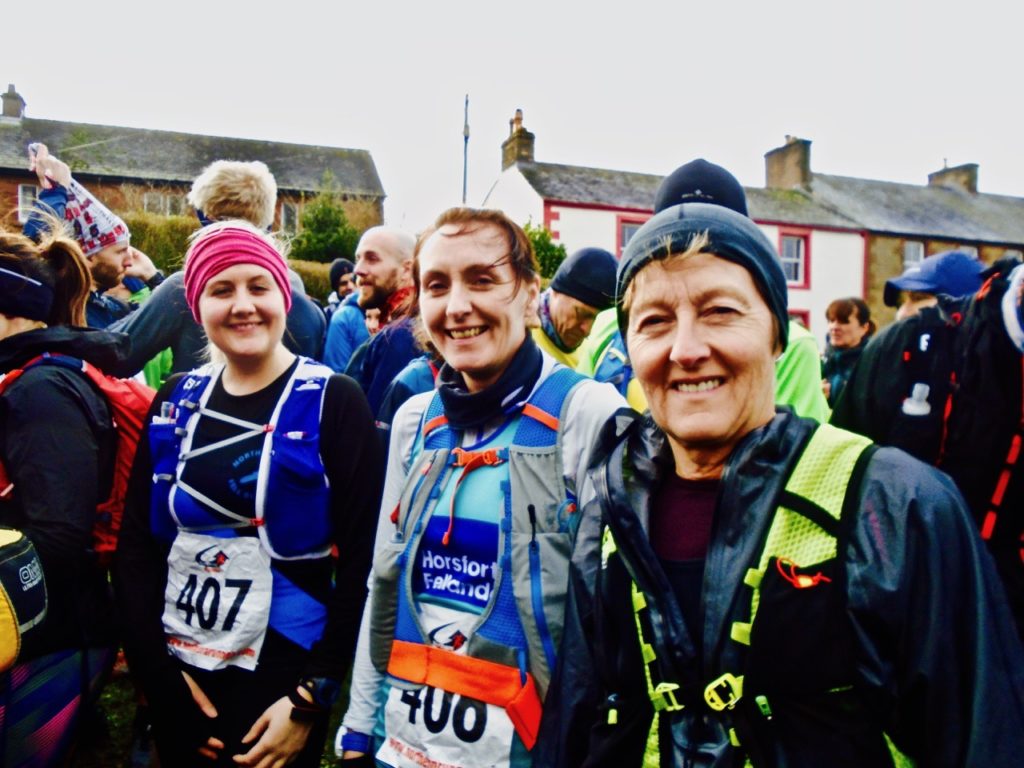
By now, a few minutes before the start, the weather was lovely. Not too cold, not windy, not wet and some sunshine. I was wearing long tights again, which astonishes all my running friends who only ever see me in shorts. “The weather must be bad if Rose has legs.” But I based my choice on those wind speeds, no matter how sunny the sky. People had made all sorts of clothing choices, from full waterproofs to vest only. That of course is up to them, as long as they carry kit, though I have my views on running in a vest in those conditions.
I was in vest and long-sleeve and no jacket. We set off, and for the first few miles, I was warm. The race goes up a tarmac lane for a while, then up to some fields, then along a couple of shoulders. At one point I cursed FRB for advising me to wear tights, as I wanted to be in shorts. But I was running well and felt good, and tried to concentrate on that, not on what was covering my legs. Anyway, he was right, because almost as soon as we turned into the valley, the weather turned too. First we had to cross a beck that I knew would be deep and rushing. It was a treat to see the Kirby Stephen Mountain Rescue team there: thank you KSMRT. And especially to the man who was standing nearly to his waist in freezing water helping each runner to cross. I am always grateful for a helping hand, and these three helping hands, passing me from one hand to another, were very welcome.
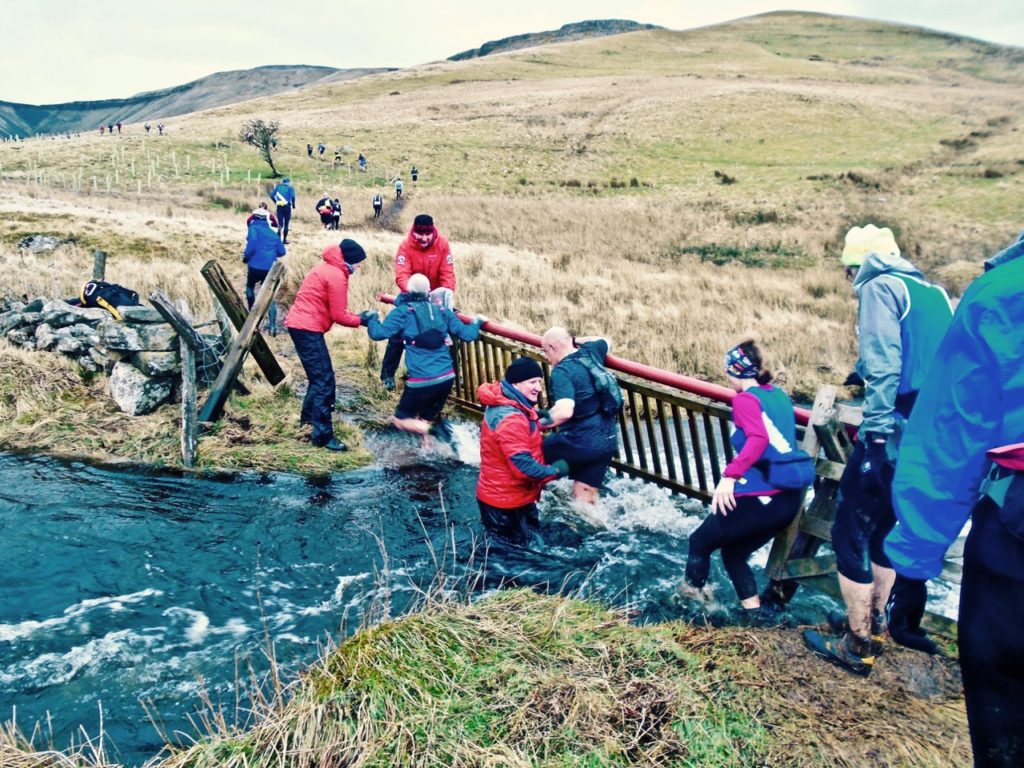
Then the wind came, and it was strong, even though it was friendly and pushing us up the valley. I could have dealt with that, but then the hail and sleet came at us sideways, and I began to get cold, and to stop regretting my clothing choice. I didn’t want to stop and put my jacket on, but I remembered last week and I knew I would get colder the higher I got, and that FRB had told me we would be running against a headwind on the downhill section. So I stopped and tried to put on my jacket, and it was tricky, not because my hands were too cold, but because the wind didn’t want me to. It was a jacket fight. I lost about 15 places to the tussle but it was the right decision, because I never wanted to take it off once over the following five miles. And I was warm enough to be able to put it on without asking for help (although this was offered by a few people who passed: thank you).
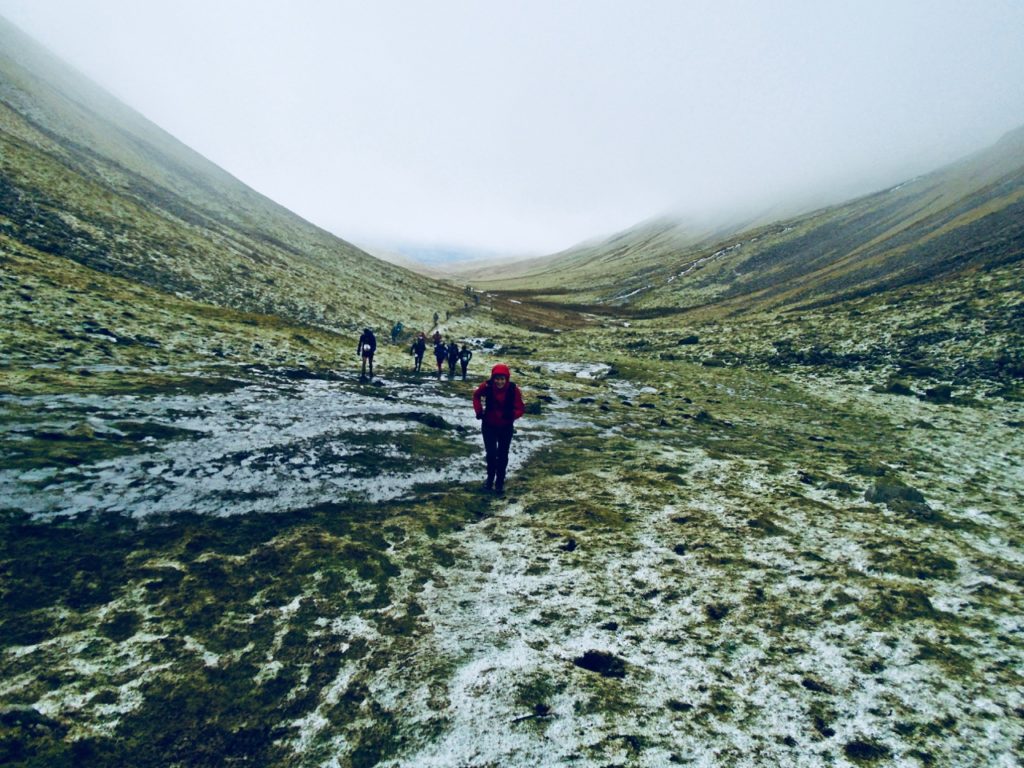
The run along the valley floor is long. Nor is it as flat as it seems. The Nick seems to get further away not nearer, like Stoodley Pike, and underfoot is either boggy or rocky and nothing inbetween. But I didn’t stop and walk as I have in other years, and I got a few places back. At the base of the Nick, I ran as far as I could, then again on a flatter bit, before the boulders began. At this point I saw that people were taking a wide arc up the first part but I couldn’t see the sense in that, when all was boulders. So I just went straight up, and got more places that way. The wind was so strong that the waterfall was blowing backwards. I stopped and turned because on the Nick I always stop and turn, and it was stunning, because unless there is clag, the view is always stunning.
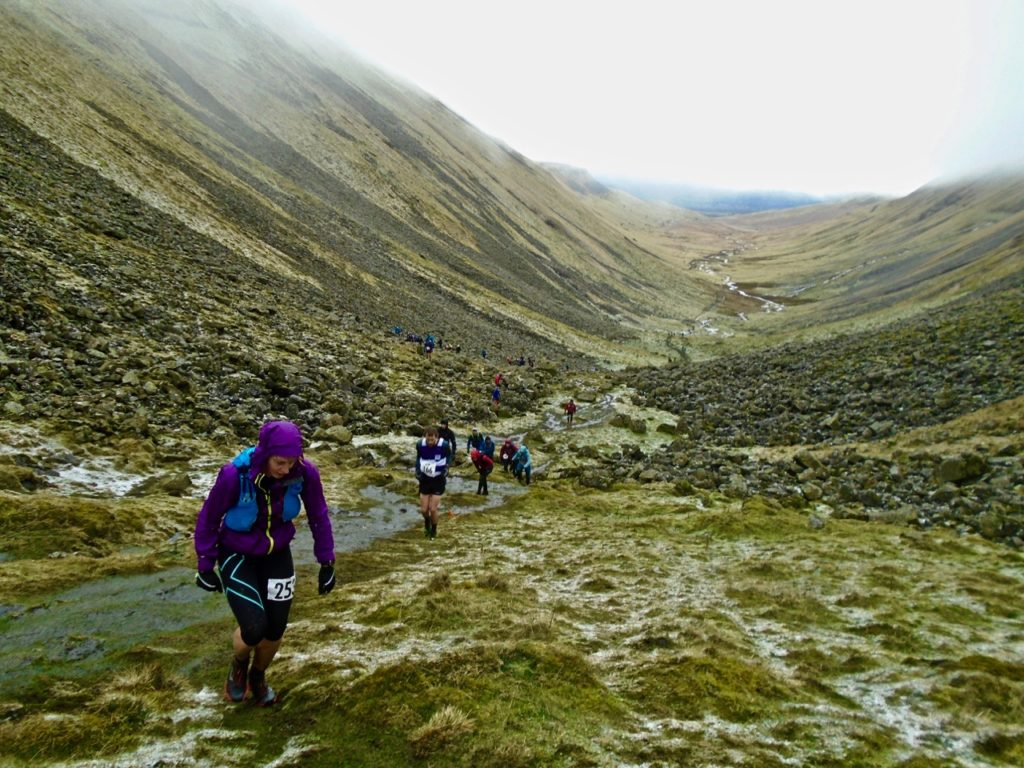
The boulders towards the top were slippery and icy, and I thought my old fear of exposure could have reappeared. But it didn’t, and I really enjoyed the climb, and even managed to smile, according to Mike’s camera:
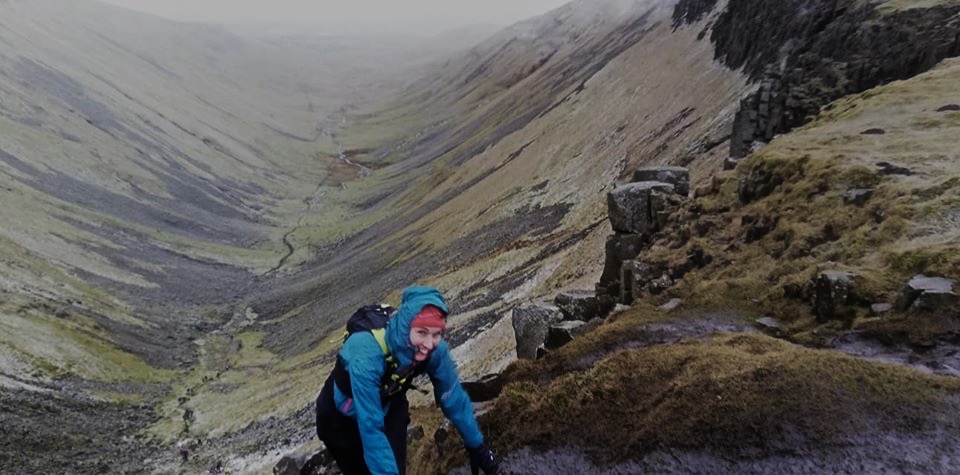
At the top, I heard “well done Rose” from FRB and also Mike from my club. I tried to give FRB a hug, but I didn’t notice his cowbell around his neck, so I managed to crush my voicebox on his cowbell which I think is not an injury that even experienced A&E staff will frequently encounter. I turned, and it was like running into a brick wall. The wind was ferocious. This kind of ferocious. It wasn’t as bad as on top of West Kip, but I still had to use a high proportion of my energy just to go forward (at West Kip, it had been about staying upright, never mind running). I suddenly felt extremely drained, but I knew my clubmate Caroline was right behind me, and she is competitive and can beat me, so I kept going. Past the Mountain Rescue team at the quad bike, where we waved our contactless dibbers, and into the wind. There is a long trod across the headland, a short incline, more trod, then the downhill proper. At this point the headwind was so bad that my contacts were sore, and I found it hard to blink. Not the best eyesight for a quick rocky downhill, but I got more places, and I kept all except one, up into the farmer’s field that is a slight incline but feels mountainous, and across the field, into the lane, where you see habitation and know you are nearly done, up the short hill into the village, round the back of houses and through yards, to the village green and the welcome sight of flags and people.
Back.
I was filthy. I knew my face was mucky because I’d used my mitts on the climb up, on my hands and knees, and then wiped my face loads of times because it was the kind of wind where your nose blows itself. But I didn’t realise how mucky.
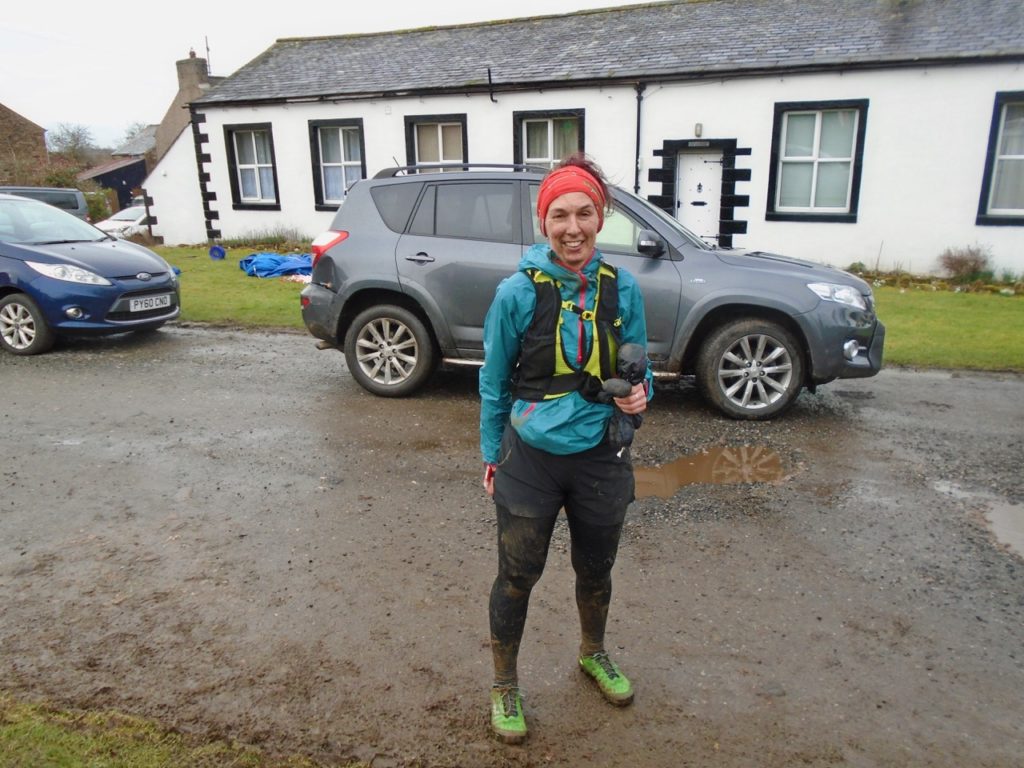
Oh well. I headed into the village hall, putting blue plastic over my shoes as requested. It was, as it always is, extremely crowded, but I got my soup, and found a tiny space next to the windowsill. “Rose,” said my clubmate Dom, “wipe your nose.” He meant wipe it free of mud, not anything else, so I washed my face. But I didn’t get changed because I felt warm. That was stupid, as once I’d gathered two cakes and a cup of tea and set off to the car, I got very very cold and didn’t warm up for a long time. Basic mountaincraft: remove your cold clothes even if you feel warm.
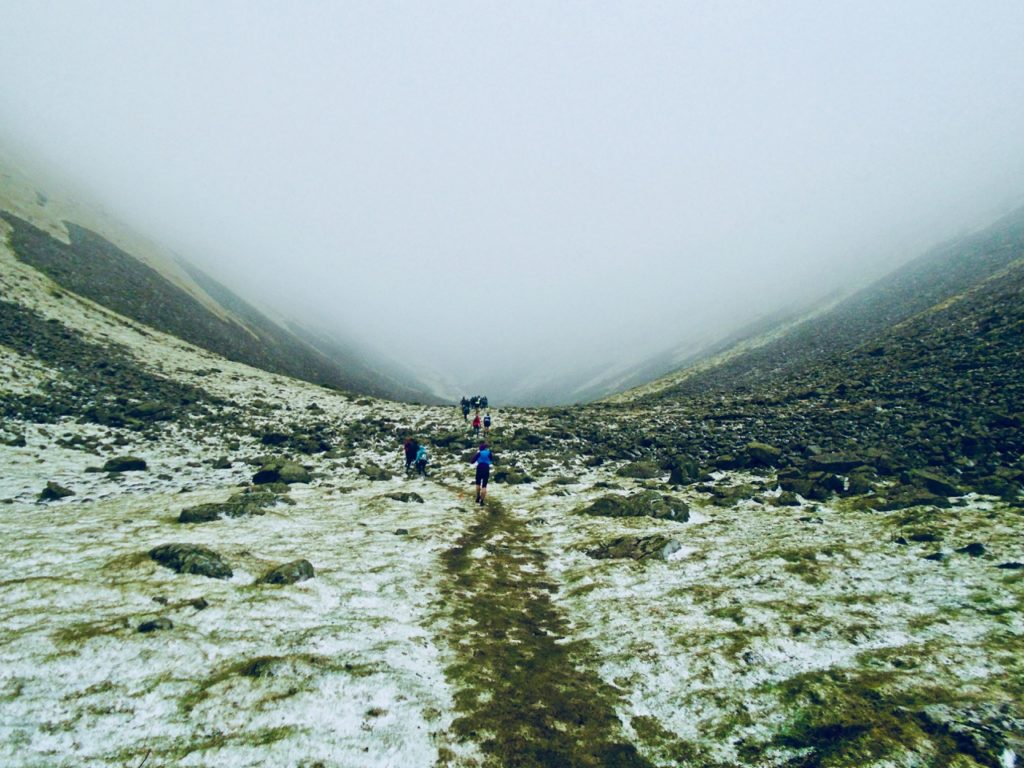
I really enjoyed myself, though I’ve had enough of wind storms. And the hail can do one. High Cup Nick is such a beautiful place, and although my time wasn’t the quickest, I think I lost ten minutes to conditions, so I’m content. Thank you to the people of Dufton, to all the volunteers, from the stalwarts in that field of spinning wheels doom to the beck sprite and anyone who stood out in the cold to marshal or cheer.
It is said that if you don’t like the weather in Scotland (or Yorkshire or Wales), wait ten minutes. This was that kind of race: autumn to begin with, then winter, then more winter, then autumn again. But it was great fun, because it always is, and out of our similarly matched group of four clubmates, I came first, and I was proud of myself.
The next day though was a different story.
